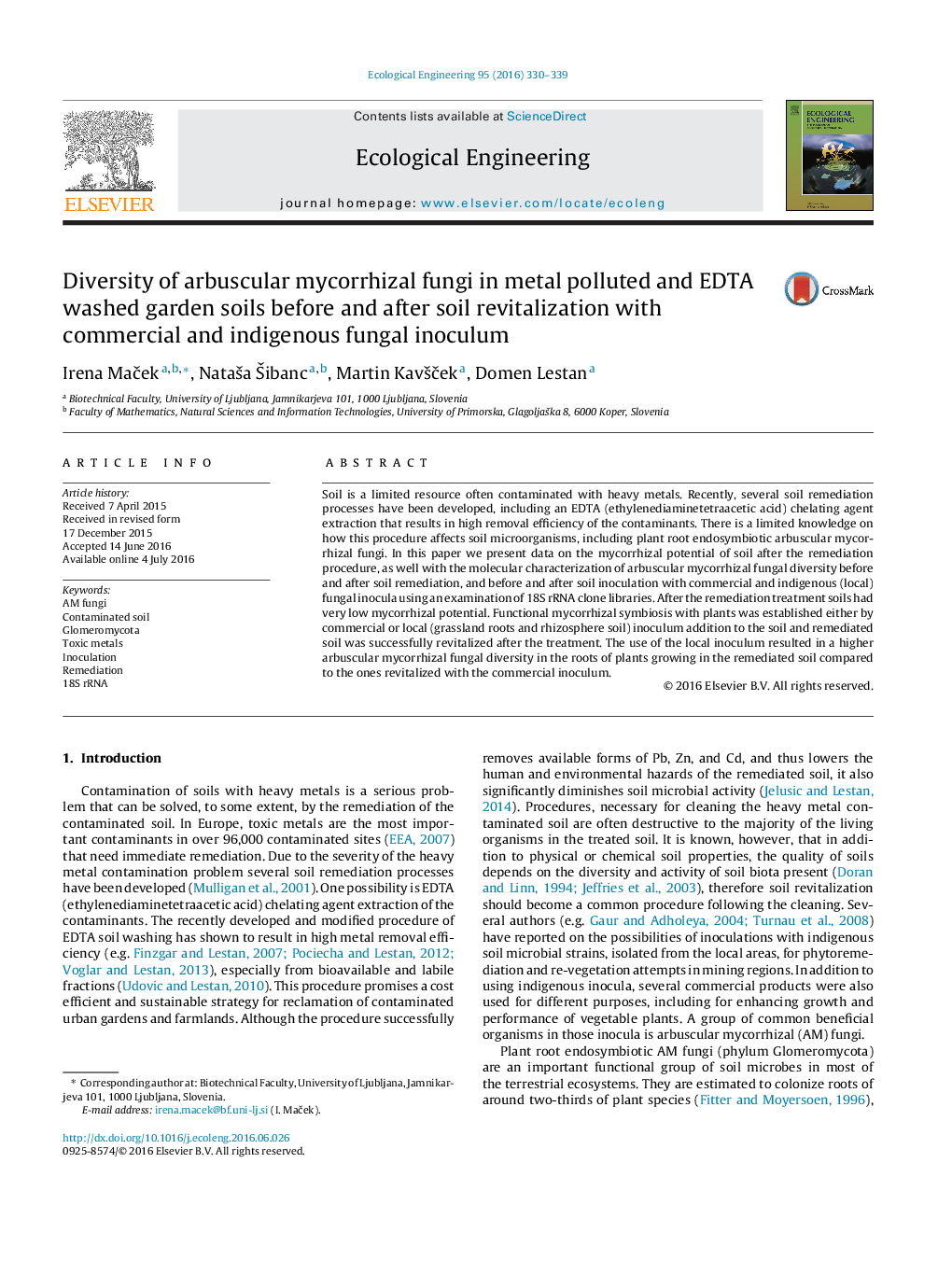| Article ID | Journal | Published Year | Pages | File Type |
|---|---|---|---|---|
| 4388458 | Ecological Engineering | 2016 | 10 Pages |
•Remediation of metal polluted soil resulted in low arbuscular mycorrhizal potential.•By inoculum addition functional arbuscular mycorrhizal symbiosis was established.•The frequent taxa after inoculation were from genera Funneliformis and Rhizophagus.•Remediated soil can be successfully revitalised with arbuscular mycorrhizal fungi.
Soil is a limited resource often contaminated with heavy metals. Recently, several soil remediation processes have been developed, including an EDTA (ethylenediaminetetraacetic acid) chelating agent extraction that results in high removal efficiency of the contaminants. There is a limited knowledge on how this procedure affects soil microorganisms, including plant root endosymbiotic arbuscular mycorrhizal fungi. In this paper we present data on the mycorrhizal potential of soil after the remediation procedure, as well with the molecular characterization of arbuscular mycorrhizal fungal diversity before and after soil remediation, and before and after soil inoculation with commercial and indigenous (local) fungal inocula using an examination of 18S rRNA clone libraries. After the remediation treatment soils had very low mycorrhizal potential. Functional mycorrhizal symbiosis with plants was established either by commercial or local (grassland roots and rhizosphere soil) inoculum addition to the soil and remediated soil was successfully revitalized after the treatment. The use of the local inoculum resulted in a higher arbuscular mycorrhizal fungal diversity in the roots of plants growing in the remediated soil compared to the ones revitalized with the commercial inoculum.
